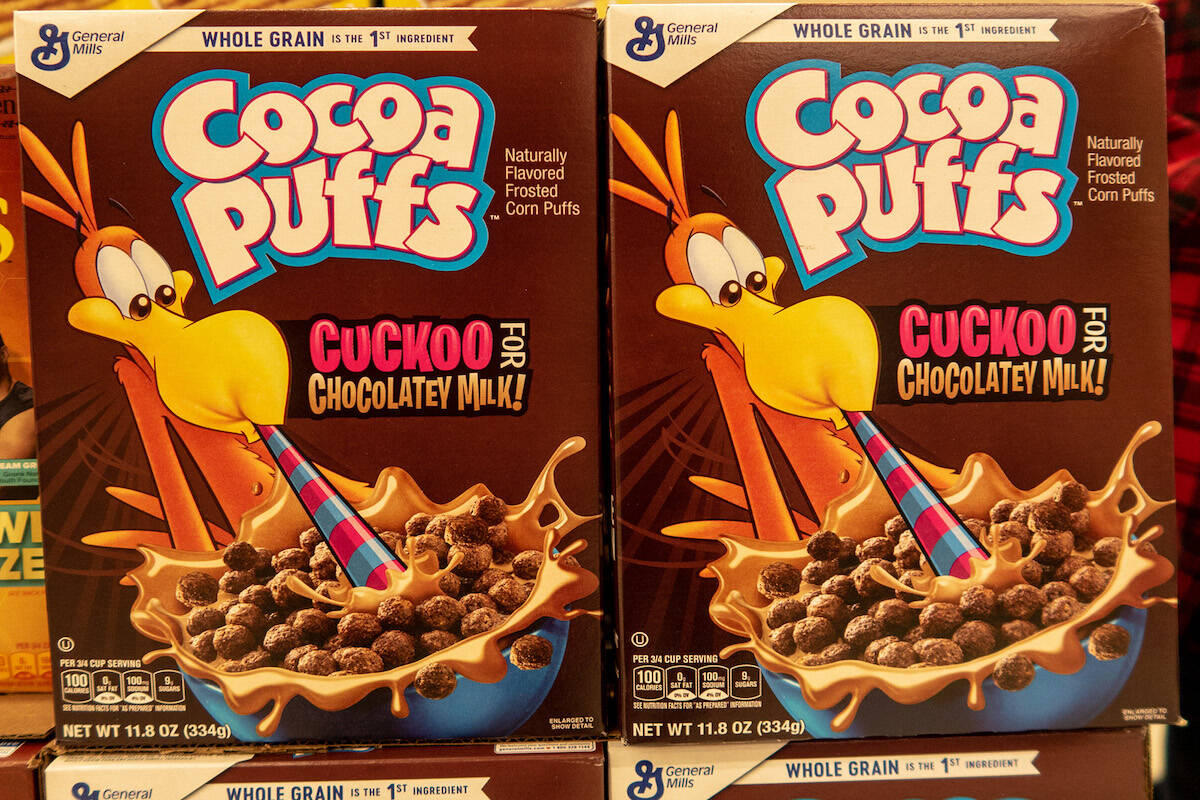Lawsuits allege high levels of lead in General Mills’ Cocoa Puffs cereal
Cocoa Puffs cereal could contain dangerously high levels of lead, according to two federal lawsuits seeking millions from General Mills.
The class-action suits filed recently in Minnesota and California demand more than $5 million in damages for consumers nationwide who “would not have purchased and consumed [the cereal] had they known the truth about the products.”
According to the California suit, a one-cup serving of Cocoa Puffs contained just shy of the state’s maximum allowable limit of 0.5 micrograms of lead.
“Almost all consumers, however, substantially exceed the recommended serving size per bowl of cereal,” the lawsuit said, adding the larger serving is due to a “prominent depiction of the cereal on the front of the box.”
Golden Valley-based General Mills said it does not comment on pending litigation.
The nation’s largest cereal producer recently defeated two lawsuits claiming Cheerios contain pesticide residue. The plaintiffs in those cases voluntarily dismissed the suits this spring not long after filing them.
General Mills had argued the company followed all laws and regulations and the suits failed to prove any harm. That same standard — failure to state a claim — will likely be the company’s defense in the Cocoa Puffs case.
“What’s the harm? No one here is complaining of a brain injury,” said University of Minnesota Law School Professor Paul Vaaler. “Worry is not enough.”
Food companies weather a number of allegations from consumer advocates, competitors and law firms every year, especially when it comes to labeling issues. Minnesota-based JonnyPops faced a suit earlier this year about the frozen treat-maker’s description of “simple, natural ingredients.”
“Sometimes when people bring these lawsuits, they seem kind of trivial. If we’re talking about an under-disclosure of lead in cereal, especially cereal marketed to children, that’s problematic,” said University of Minnesota Law School Professor Prentiss Cox. “That’s not in any sense trivial. That’s a very serious issue.”
But it comes down to the facts in each case, he said, that determine whether the claim will advance toward a settlement or other resolution.
The allegations in the Cocoa Puffs lawsuits stem from a purported duty to warn consumers the products might not be safe for consumption. Nowhere does the company “disclose that the products could poison the consumer,” states the Minnesota suit, which a Kentucky man and South Carolina woman filed.
A California man filed the other suit in his home state.
“According to independent testing of other ‘chocolatey’ cereals, those cereals do not contain lead,” the California suit read. “Consumers, however, are deprived of making this informed choice because defendant fails to disclose the presence of lead.”
A study published this week in Frontiers of Nutrition found a number of dark chocolate products contain startlingly high levels of lead and cadmium, building on Consumer Reports’ tests and others in recent years linking the metals to cacao beans and cocoa powder. Both metals are toxic to humans and accumulate in the body through time.
Class-action lawsuits targeting chocolate makers, including giants like Hershey and smaller brands like Theo, have percolated in recent years as a result.
“Heavy metal contamination in consumer foods remains a significant issue globally, though there is evidence of progress in the domestic United States,” especially with lead, the Frontiers study said. “Heavy metal contamination has been demonstrated to be pervasive across nations and has been detected in nearly every food category from grain to meat products, with vegetable and cereal products most affected by industrial and environmental sources of contamination.”






















